Developing Climate Resilience in Aridlands Using Rock Detention Structures as Green Infrastructure
Abstract
:1. Introduction
Study Area
2. Materials and Methods
2.1. Weather Stations
2.2. Hydrologic Monitoring and Modeling
3. Results
3.1. Weather Stations
3.2. Hydrologic Monitoring and Modeling
4. Discussion
5. Conclusions
Author Contributions
Funding
Data Availability Statement
Acknowledgments
Conflicts of Interest
Appendix A
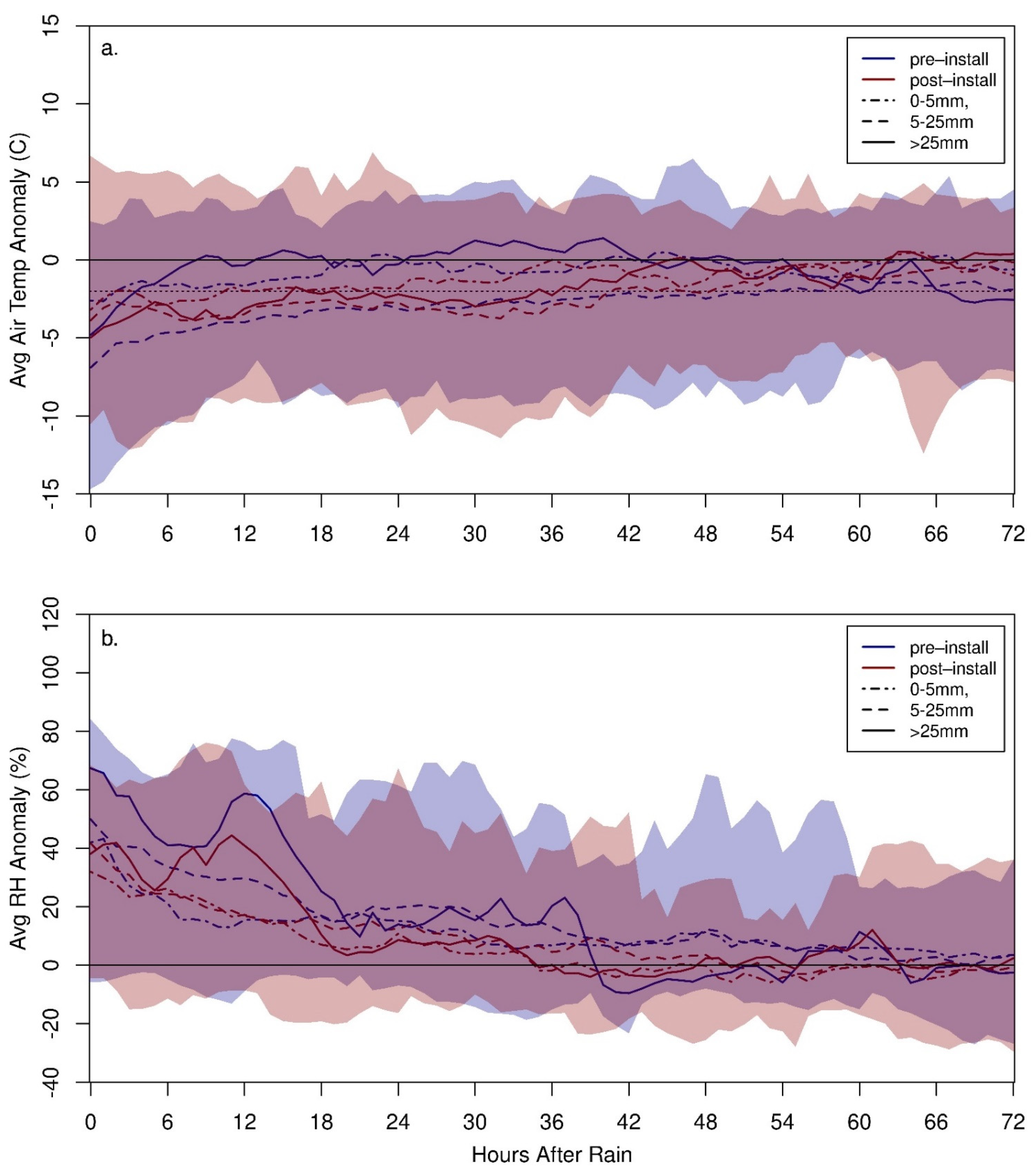
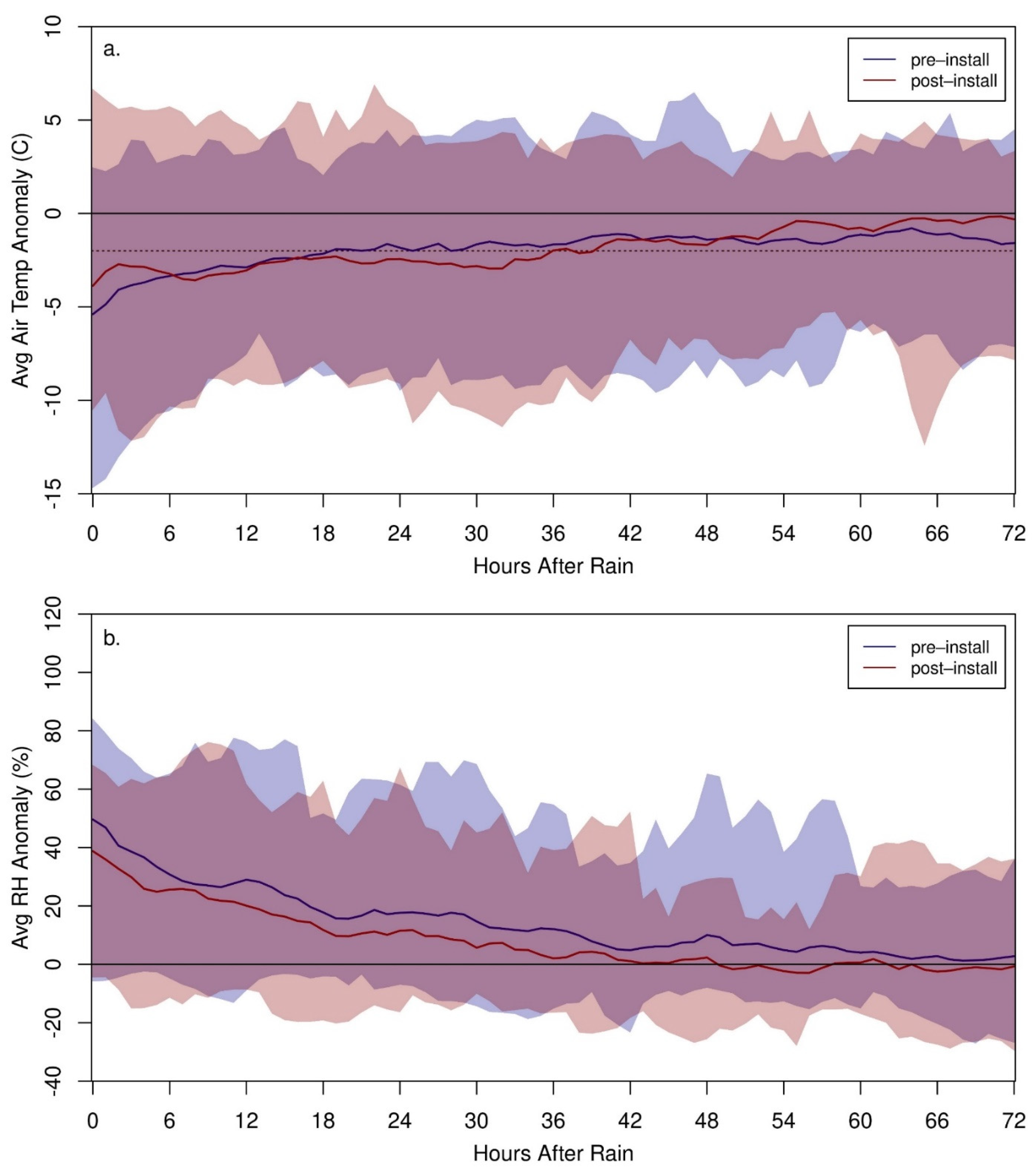
References
- Seager, R.; Ting, M.; Held, I.; Kushnir, Y.; Lu, J.; Vecchi, G.; Huang, H.-P.; Harnik, N.; Leetmaa, A.; Lau, N.-C.; et al. Model Projections of an Imminent Transition to a More Arid Climate in Southwestern North America. Science 2007, 316, 1181–1184. [Google Scholar] [CrossRef] [PubMed]
- Udall, B.; Overpeck, J. The Twenty-First Century Colorado River Hot Drought and Implications for the Future. Water Resour. Res. 2017, 53, 2404–2418. [Google Scholar] [CrossRef] [Green Version]
- Demuzere, M.; Orru, K.; Heidrich, O.; Olazabal, E.; Geneletti, D.; Orru, H.; Bhave, A.G.; Mittal, N.; Feliu, E.; Faehnle, M. Mitigating and adapting to climate change: Multi-functional and multi-scale assessment of green urban infrastructure. J. Environ. Manag. 2014, 146, 107–115. [Google Scholar] [CrossRef]
- Shashua-Bar, L.; Potchter, O.; Bitan, A.; Boltansky, D.; Yaakov, Y. Microclimate Modelling of Street Tree Species Effects Within the Varied Urban Morphology in the Mediterranean City of Tel Aviv, Israel. Int. J. Clim. 2010, 30, 44–57. [Google Scholar] [CrossRef]
- Häb, K.; Middel, A.; Ruddell, B.L.; Hagen, H. TraVis—A Visualization Framework for Mobile Transect Data Sets in an Urban Microclimate Context. In Proceedings of the April 2015 IEEE Pacific Visualization Symposium (PacificVis), Hangzhou, China, 14–17 April 2015; pp. 167–174. [Google Scholar] [CrossRef]
- Norman, L.M.; Pulliam, H.R.; Girard, M.M.; Buckley, S.M.; Misztal, L.; Seibert, D.; Campbell, C.; Callegary, J.B.; Tosline, D.J.; Wilson, N.R.; et al. Editorial: Combining the Science and Practice of Restoration Ecology—Case Studies of a Grassroots Binational Restoration Collaborative in the Madrean Archipelago Ecoregion (2014–2019). Air Soil Water Res. 2021, 14. [Google Scholar] [CrossRef]
- Warshall, P. The Madrean Sky Island Archipelago: A Planetary Overview; US Department of Agriculture, Forest Service, Rocky Mountain Forest and Range Experiment Station: Fort Collins, CO, USA, 1995; pp. 6–18. [Google Scholar]
- Norman, L.M.; Niraula, R. Model Analysis of Check Dam Impacts on Long-Term Sediment and Water Budgets in Southeast Arizona, USA. Ecohydrol. Hydrobiol. 2016, 16, 125–137. [Google Scholar] [CrossRef] [Green Version]
- Norman, L.M.; Sankey, J.B.; Dean, D.; Caster, J.; DeLong, S.; DeLong, W.; Pelletier, J.D. Quantifying Geomorphic Change at Ephemeral Stream Restoration Sites Using a Coupled-Model Approach. Geomorphology 2017, 283, 1–16. [Google Scholar] [CrossRef]
- Norman, L.M.; Callegary, J.B.; Lacher, L.; Wilson, N.R.; Fandel, C.; Forbes, B.T.; Swetnam, T. Modeling Riparian Restoration Impacts on the Hydrologic Cycle at the Babacomari Ranch, SE Arizona, USA. Water 2019, 11, 381. [Google Scholar] [CrossRef] [Green Version]
- Norman, L.M. Ecosystem Services of Riparian Restoration: A Review of Rock Detention Structures in the Madrean Archipelago Ecoregion. Air Soil Water Res. 2020, 13, 117862212094633. [Google Scholar] [CrossRef]
- Callegary, J.B.; Norman, L.M.; Eastoe, C.J.; Sankey, J.B.; Youberg, A. Preliminary Assessment of Carbon and Nitrogen Sequestration Potential of Wildfire-Derived Sediments Stored by Erosion Control Structures in Forest Ecosystems, Southwest USA. Air Soil Water Res. 2021, 14, 117862212110017. [Google Scholar] [CrossRef]
- Norman, L.; Villarreal, M.; Pulliam, H.R.; Minckley, R.L.; Gass, L.; Tolle, C.; Coe, M. Remote Sensing Analysis of Riparian Vegetation Response to Desert Marsh Restoration in the Mexican Highlands. Ecol. Eng. 2014, 70, 241–254. [Google Scholar] [CrossRef] [Green Version]
- Wilson, N.R.; Norman, L.M. Analysis of Vegetation Recovery Surrounding a Restored Wetland Using the Normalized Difference Infrared Index (NDII) and Normalized Difference Vegetation Index (NDVI). Int. J. Remote. Sens. 2018, 39, 3243–3274. [Google Scholar] [CrossRef] [Green Version]
- Erell, E.; Pearlmutter, D.; Williamson, T. Urban Microclimate: Designing the Spaces Between Buildings; Earthscan: London, UK, 2011; ISBN 978-1-84407-467-9. [Google Scholar]
- Rosenberg, N.J.; Blad, B.L.; Verma, S.B. Microclimate: The Biological Environment, 2nd ed.; Wiley: New York, NY, USA, 1983; ISBN 978-0-471-06066-6. [Google Scholar]
- Jenerette, G.D.; Harlan, S.L.; Buyantuev, A.; Stefanov, W.L.; Declet-Barreto, J.; Ruddell, B.L.; Myint, S.W.; Kaplan, S.; Li, X. Micro-Scale Urban Surface Temperatures Are Related to Land-Cover Features and Residential Heat Related Health Impacts in Phoenix, AZ USA. Landsc. Ecol. 2016, 31, 745–760. [Google Scholar] [CrossRef]
- Hall, S.J.; Learned, J.; Ruddell, B.; Larson, K.L.; Cavender-Bares, J.; Bettez, N.; Groffman, P.M.; Grove, J.M.; Heffernan, J.B.; Hobbie, S.E.; et al. Convergence of Microclimate in Residential Landscapes across Diverse Cities in the United States. Landsc. Ecol. 2015, 31, 101–117. [Google Scholar] [CrossRef]
- Vanos, J.K.; Middel, A.; McKercher, G.R.; Kuras, E.R.; Ruddell, B.L. Hot Playgrounds and children’s Health: A Multiscale Analysis of Surface Temperatures in Arizona, USA. Landsc. Urban Plan. 2016, 146, 29–42. [Google Scholar] [CrossRef] [Green Version]
- Chow, W.T.L.; Brennan, D.; Brazel, A.J. Urban Heat Island Research in Phoenix, Arizona: Theoretical Contributions and Policy Applications. Bull. Am. Meteorol. Soc. 2012, 93, 517–530. [Google Scholar] [CrossRef] [Green Version]
- Wang, Y.; Ran, L.; Fang, N.; Shi, Z. Aggregate Stability and Associated Organic Carbon and Nitrogen As Affected by Soil Erosion and Vegetation Rehabilitation on the Loess Plateau. Catena 2018, 167, 257–265. [Google Scholar] [CrossRef]
- Brazel, A.; Gober, P.; Lee, S.; Grossman-Clarke, S.; Zehnder, J.; Hedquist, B.; Comparri, E. Determinants of Changes in the Regional Urban Heat Island in Metropolitan Phoenix (Arizona, USA) Between 1990 and 2004. Clim. Res. 2007, 33, 171–182. [Google Scholar] [CrossRef] [Green Version]
- Yang, Z.; Dominguez, F.; Gupta, H.; Zeng, X.; Norman, L. Urban Effects on Regional Climate: A Case Study in the Phoenix and Tucson “Sun Corridor”. Earth Interactions 2016, 20, 1–25. [Google Scholar] [CrossRef]
- Durre, I.; Squires, M.F.; Vose, R.S.; Yin, X.; Arguez, A.; Applequist, S. NOAA’s 1981–2010 U.S. Climate Normals: Monthly Precipitation, Snowfall, and Snow Depth. J. Appl. Meteorol. Clim. 2013, 52, 2377–2395. [Google Scholar] [CrossRef]
- Williams, A.P.; Cook, E.R.; Smerdon, J.E.; Cook, B.I.; Abatzoglou, J.T.; Bolles, K.; Baek, S.H.; Badger, A.M.; Livneh, B. Large contribution from anthropogenic warming to an emerging North American megadrought. Science 2020, 368, 314–318. [Google Scholar] [CrossRef] [PubMed]
- Iwaniec, D.M.; Cook, E.M.; Davidson, M.J.; Berbés-Blázquez, M.; Grimm, N.B. Integrating Existing Climate Adaptation Planning into Future Visions: A Strategic Scenario for the Central Arizona–Phoenix Region. Landsc. Urban Plan. 2020, 200, 103820. [Google Scholar] [CrossRef]
- Tosline, D.; Norman, L.M.; Greimann, B.P.; Cederberg, J.; Huang, V.; Ruddell, B.L. Impacts of Grade Control Structure Installations on Hydrology and Sediment Transport as an Adaptive Management Strategy; Bureau of Reclamation Phoenix Area Office: Phoenix, AZ, USA, 2020. [Google Scholar]
- Goodrich, D.C.; Keefer, T.O.; Unkrich, C.L.; Nichols, M.H.; Osborn, H.B.; Stone, J.J.; Smith, J.R. Long-Term Precipitation Database, Walnut Gulch Experimental Watershed, Arizona, United States. Water Resour. Res. 2008, 44. [Google Scholar] [CrossRef]
- Rantz, S.E. Measurement and Computation of Streamflow; United States Geological Survey (USGS): Washington, DC, USA, 1982. [Google Scholar]
- Lai, Y.G. SRH-2D Version 2: Sedimentation and River Hydraulics—Two-Dimensional River Flow Modeling; U.S. Department of the Interior Bureau of Reclamation Technical Service Center: Denver, CO, USA, 2008; p. 109. [Google Scholar]
- Arizona Department of Water Resources. State Standard for Hydrologic Modeling Guidelines; 2007; p. 71. Available online: https://new.azwater.gov/sites/default/files/Hydrology_State_Standard.pdf (accessed on 30 August 2021).
- Lane, L.J. Transmission Losses. In National Engineering Handbook; U.S. Department of Agriculture, Soil Conservation Service: Washington, DC, USA, 1983; Chapter 19; p. 21. [Google Scholar]
- Horton, R.E. The Rôle of Infiltration in the Hydrologic Cycle. Trans. Am. Geophys. Union 1933, 14, 446–460. [Google Scholar] [CrossRef]
- Norman, L.; Huth, H.; Levick, L.; Burns, I.S.; Guertin, D.P.; Lara-Valencia, F.; Semmens, D. Flood Hazard Awareness and Hydrologic Modelling at Ambos Nogales, United States-Mexico Border. J. Flood Risk Manag. 2010, 3, 151–165. [Google Scholar] [CrossRef]
- Norman, L.M.; Levick, L.; Guertin, D.P.; Callegary, J.; Guadarrama, J.Q.; Gil Anaya, C.Z.; Prichard, A.; Gray, F.; Castellanos, E.; Tepezano, E.; et al. Nogales Flood Detention Study. Open-File Rep. 2010. [Google Scholar] [CrossRef] [Green Version]
- Norman, L.M.; Brinkerhoff, F.; Gwilliam, E.; Guertin, D.P.; Callegary, J.; Goodrich, D.C.; Nagler, P.L.; Gray, F. Hydrologic Response of Streams Restored With Check Dams in the Chiricahua Mountains, Arizona. River Res. Appl. 2016, 32, 519–527. [Google Scholar] [CrossRef] [Green Version]
- National Water Information System. USGS Water Data for the Nation. U.S. Geological Survey Web Interface USGS 332153112022300 UNNAMED WASH AT HEARD SCOUT PUEBLO NEAR PHOENIX, A.. Available online: http://dx.doi.org/10.5066/F7P55KJN (accessed on 27 April 2021).
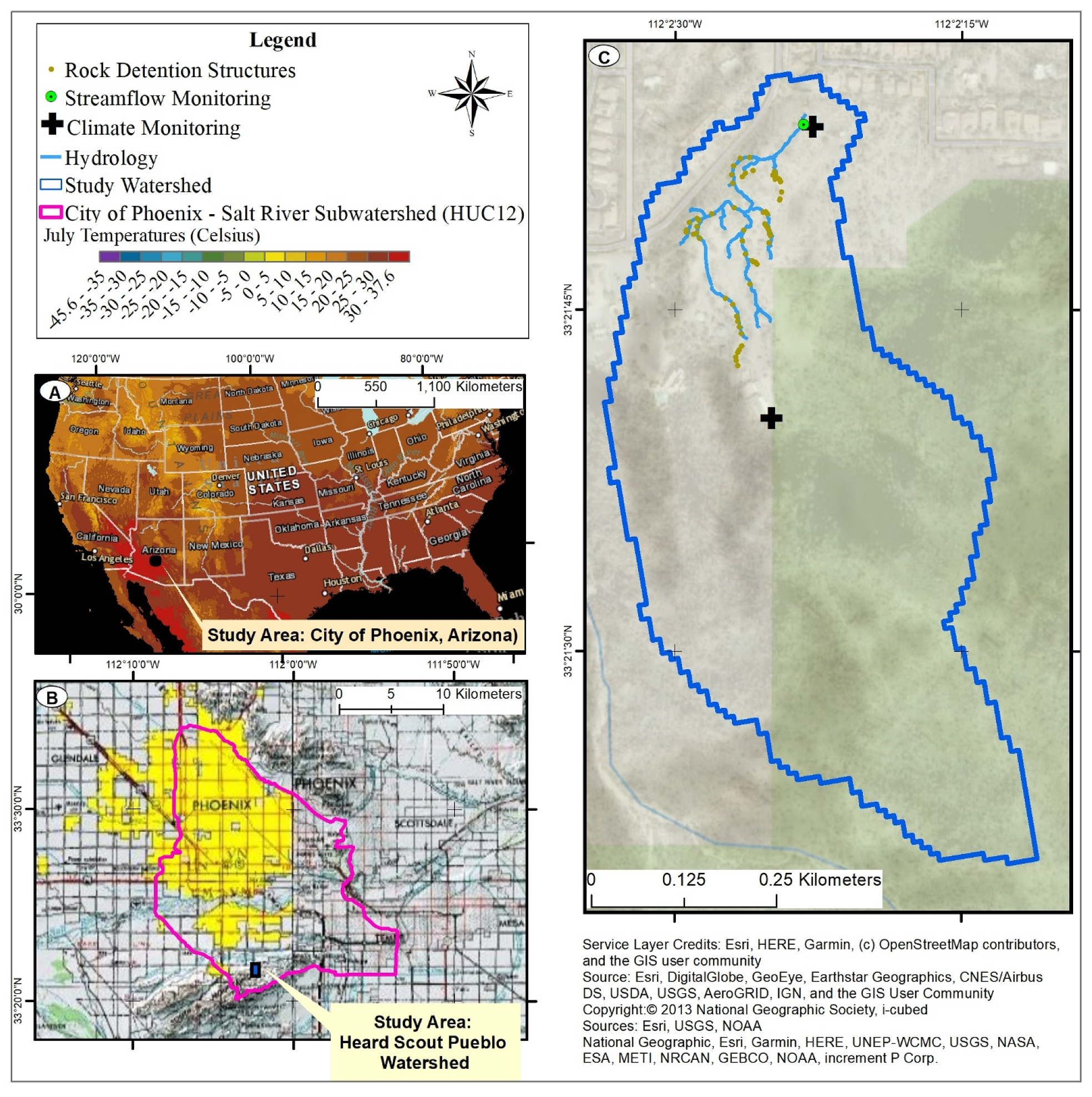
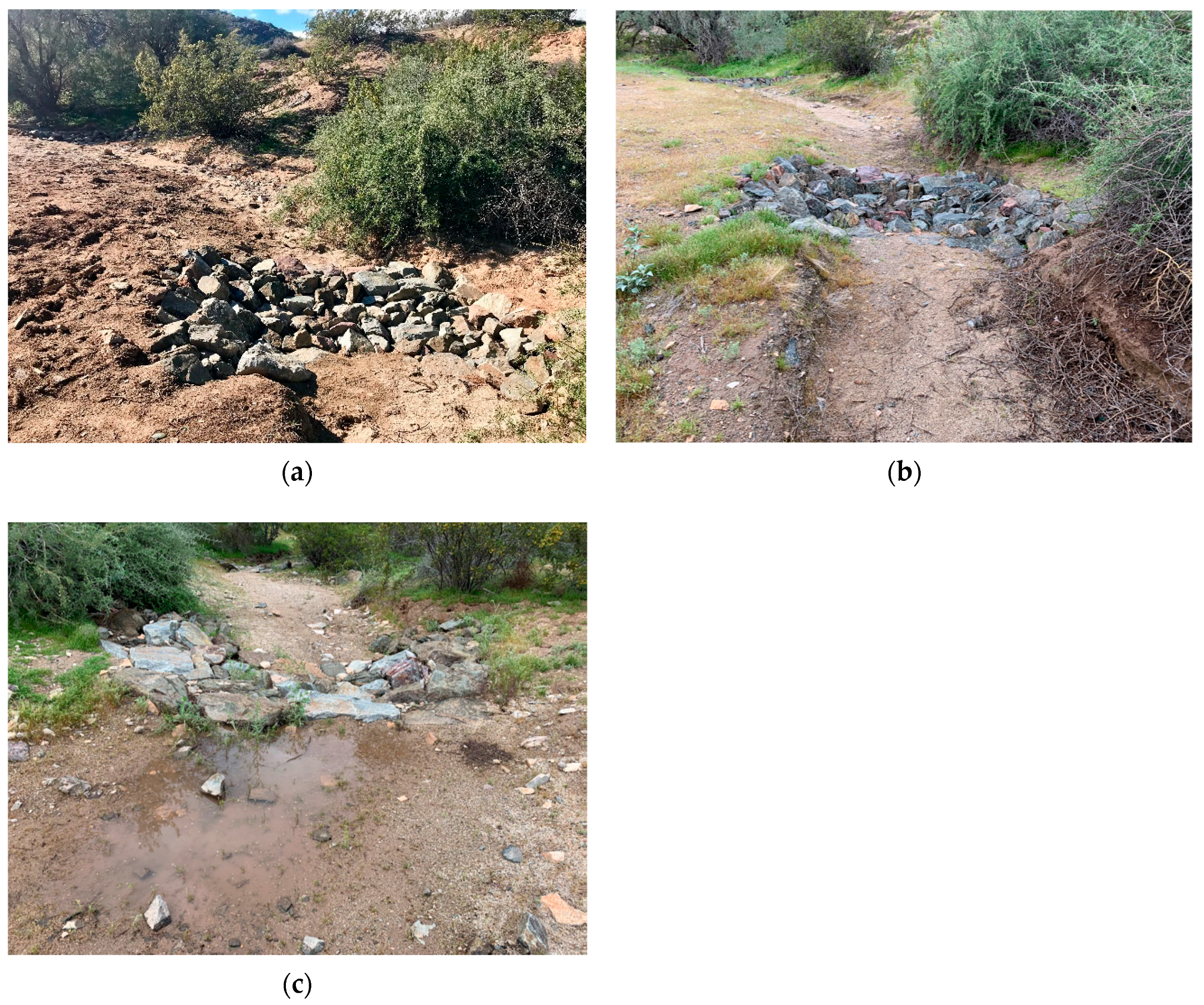
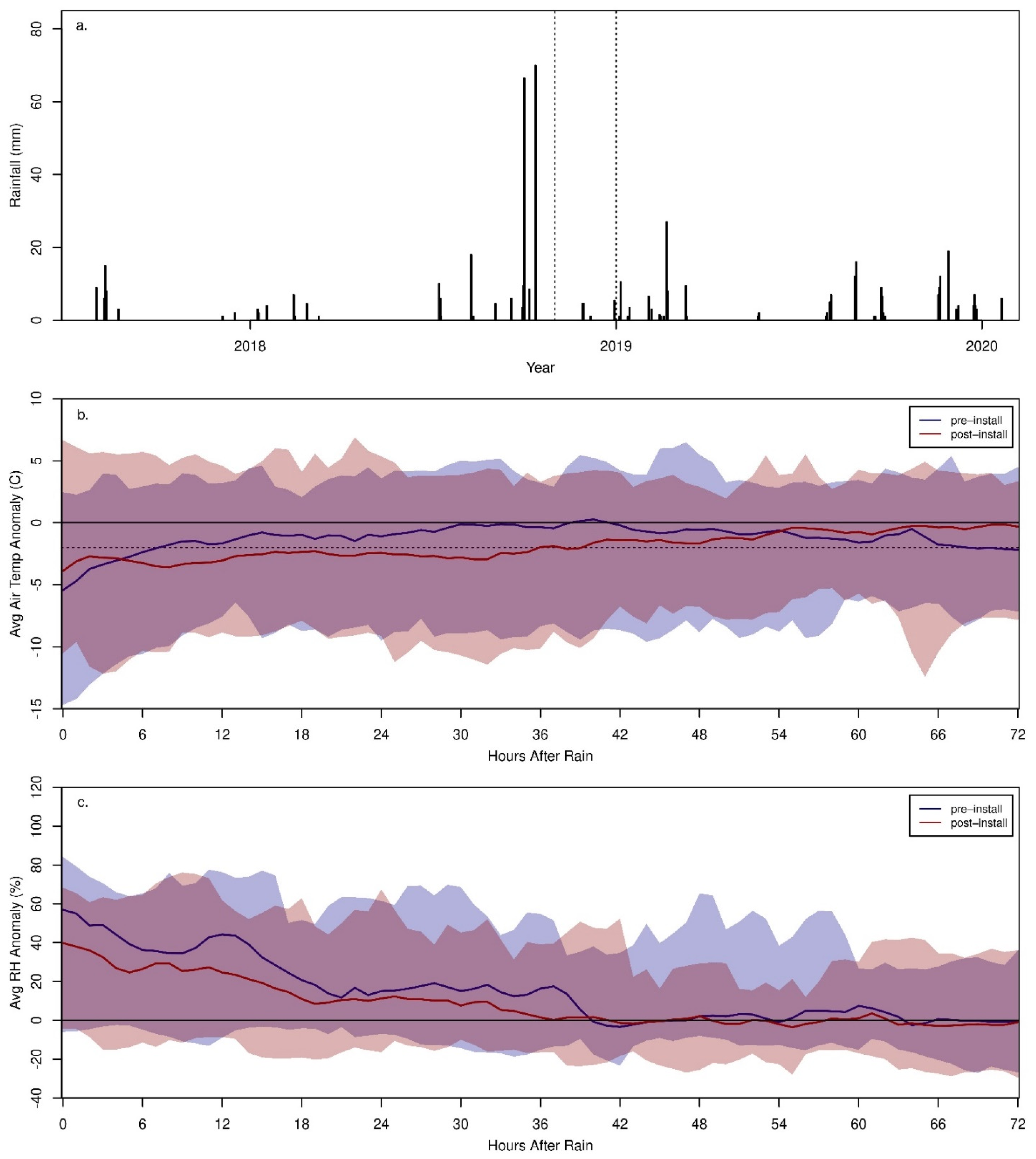
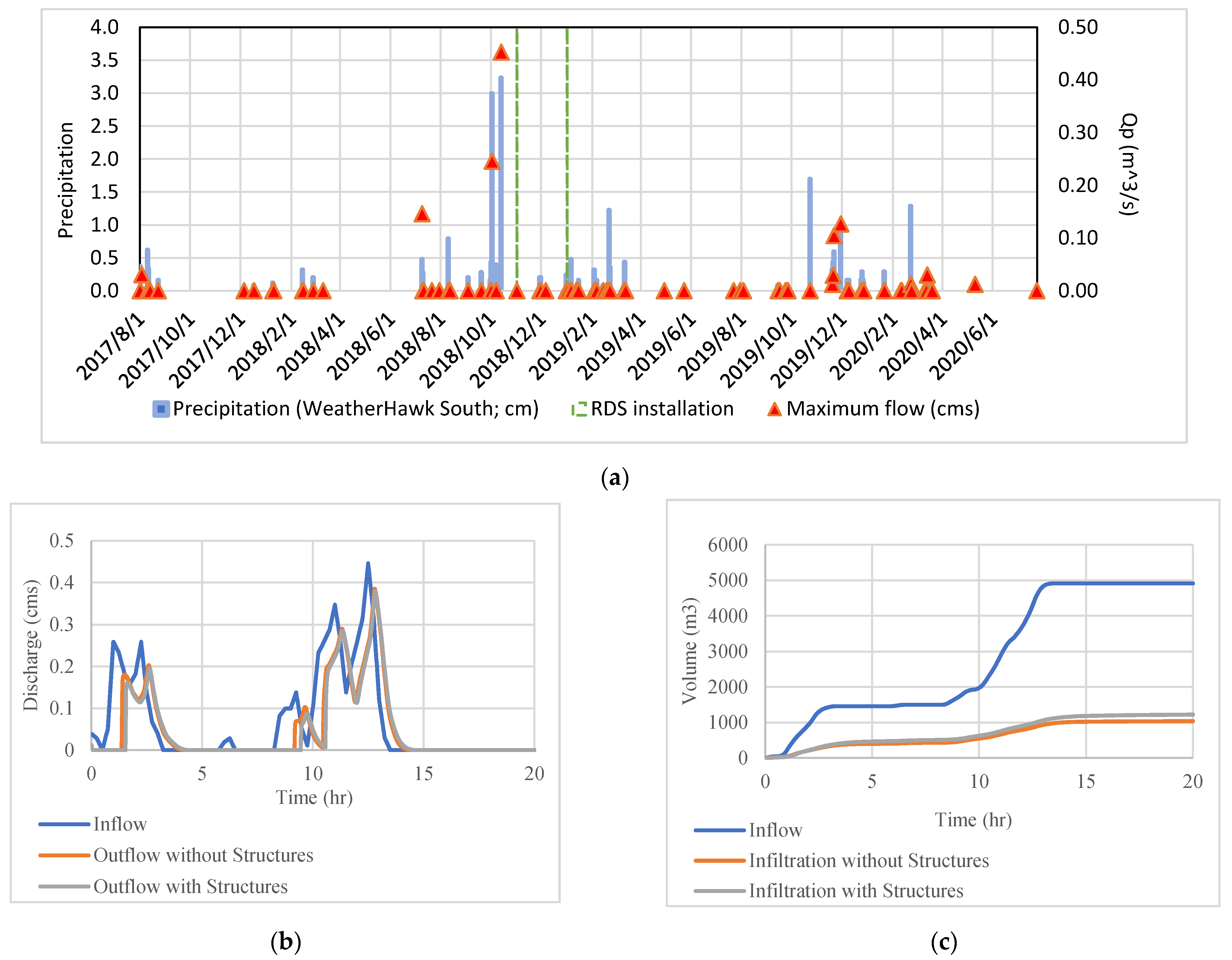
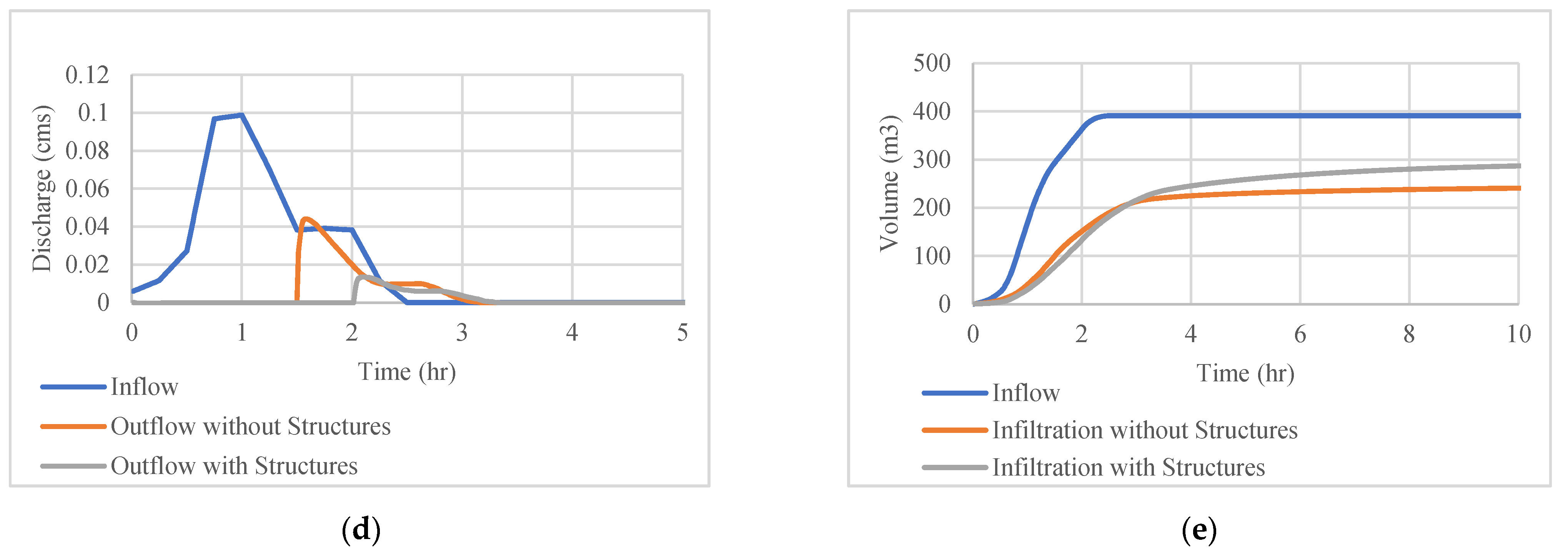
Publisher’s Note: MDPI stays neutral with regard to jurisdictional claims in published maps and institutional affiliations. |
© 2021 by the authors. Licensee MDPI, Basel, Switzerland. This article is an open access article distributed under the terms and conditions of the Creative Commons Attribution (CC BY) license (https://creativecommons.org/licenses/by/4.0/).
Share and Cite
Norman, L.M.; Ruddell, B.L.; Tosline, D.J.; Fell, M.K.; Greimann, B.P.; Cederberg, J.R. Developing Climate Resilience in Aridlands Using Rock Detention Structures as Green Infrastructure. Sustainability 2021, 13, 11268. https://doi.org/10.3390/su132011268
Norman LM, Ruddell BL, Tosline DJ, Fell MK, Greimann BP, Cederberg JR. Developing Climate Resilience in Aridlands Using Rock Detention Structures as Green Infrastructure. Sustainability. 2021; 13(20):11268. https://doi.org/10.3390/su132011268
Chicago/Turabian StyleNorman, Laura M., Benjamin L. Ruddell, Deborah J. Tosline, Michael K. Fell, Blair P. Greimann, and Jay R. Cederberg. 2021. "Developing Climate Resilience in Aridlands Using Rock Detention Structures as Green Infrastructure" Sustainability 13, no. 20: 11268. https://doi.org/10.3390/su132011268
APA StyleNorman, L. M., Ruddell, B. L., Tosline, D. J., Fell, M. K., Greimann, B. P., & Cederberg, J. R. (2021). Developing Climate Resilience in Aridlands Using Rock Detention Structures as Green Infrastructure. Sustainability, 13(20), 11268. https://doi.org/10.3390/su132011268





